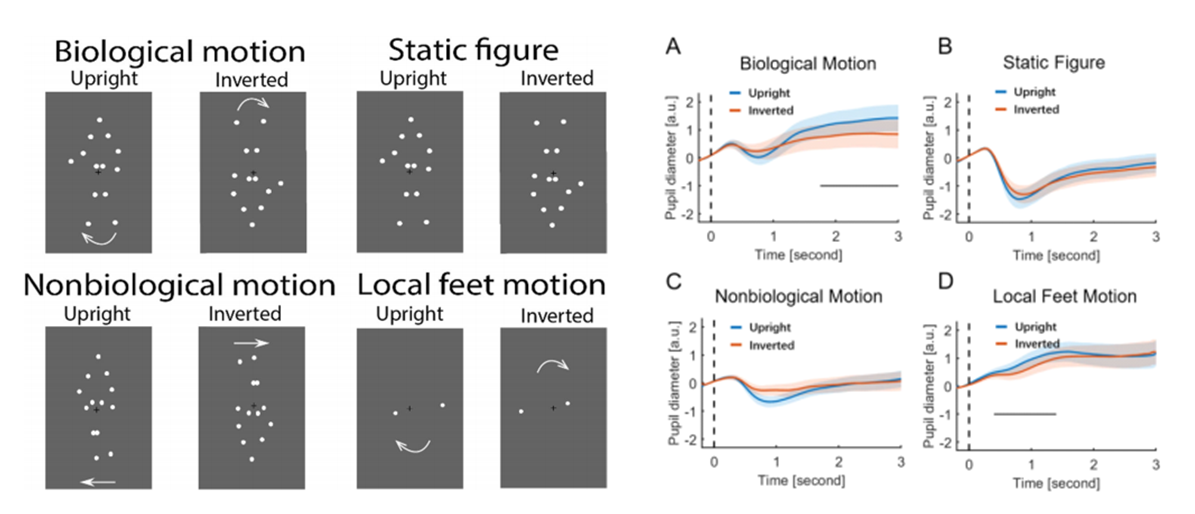
Pupil size not only responds to changes in light, but also reflects an individual's internal cognitive processing. For example, pupils dilate when people look at pictures of tasty food or perform mathematical calculations as a result of increased arousal or mental effort.
A research team led by Prof. JIANG Yi from the Institute of Psychology of the Chinese Academy of Sciences found that pupil size can also reflect high-level social cognitive processes. They found that the perception of life motion unfolds in the pupils of the eyes.
The study was published online in Attention, Perception, & Psychophysics on May 31.
In our daily lives, we effortlessly perceive the movements of living organisms, such as pedestrians walking in a station or cats running in the yard. Previous studies have shown that the human visual system is highly sensitive to biological motion information. However, it is still unclear whether this visual sensitivity can be objectively measured using a no-report method. As one of the physiological indicators of the autonomic nervous system, changes in pupil size provide valuable insights into an individual's internal state, without relying on subjective reports from the observers.
In this study, the researchers recorded observers' pupil sizes as they watched the biological motion, respectively. They found that the pupil size was significantly enlarged when observers viewed upright biological motion compared with the inverted counterparts.
In addition, neither the perception of a static figure nor the perception of non-biological motion (with the acceleration of the movements removed) induced a greater pupil dilation, suggesting that such an effect depended critically on the dynamic biological properties. Interestingly, such an effect could be extended to local foot motion signals.
Taken together, these findings confirm that the eye pupil can signal life motion perception, providing new empirical evidence that the processing of bio-social information can be indexed by the pupil. Because upright and inverted biological motion differ in their gravity-aligned motion cues, these results also highlight the importance of these gravity-aligned motion cues in the perception of biological motion.
More importantly, with the convenience, objectivity, and non-invasiveness of pupillometry, the current study paves the way for the potential application of pupillary responses in detecting the deficiency of life motion perception in individuals with socio-cognitive disorders.
This study was supported by the Ministry of Science and Technology of China and the National Natural Science Foundation of China.

The experimental stimuli and results. (Image by CHENG Yuhui)

86-10-68597521 (day)
86-10-68597289 (night)

52 Sanlihe Rd., Xicheng District,
Beijing, China (100864)

